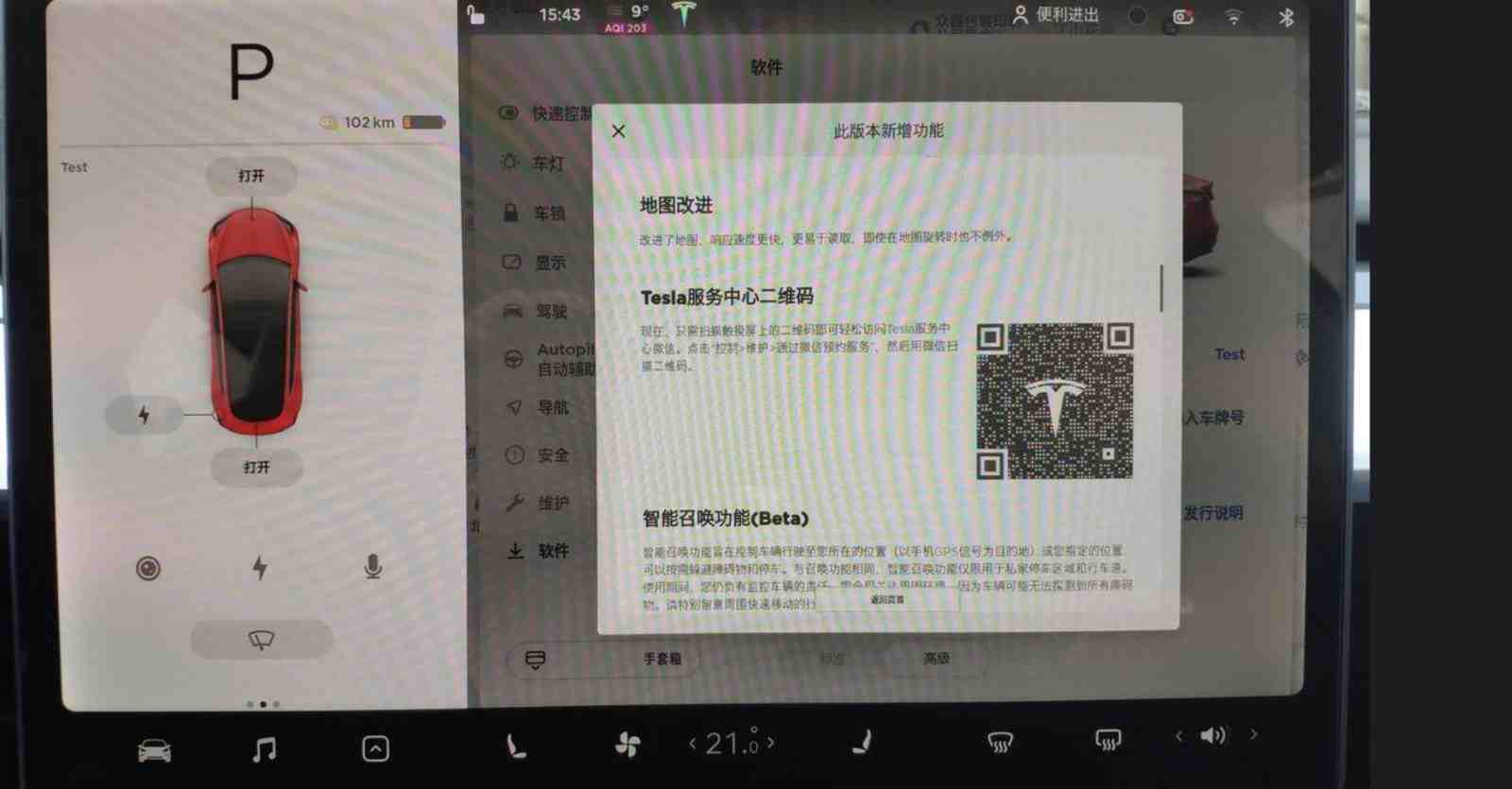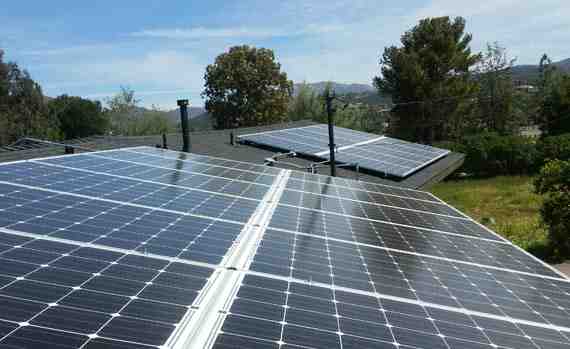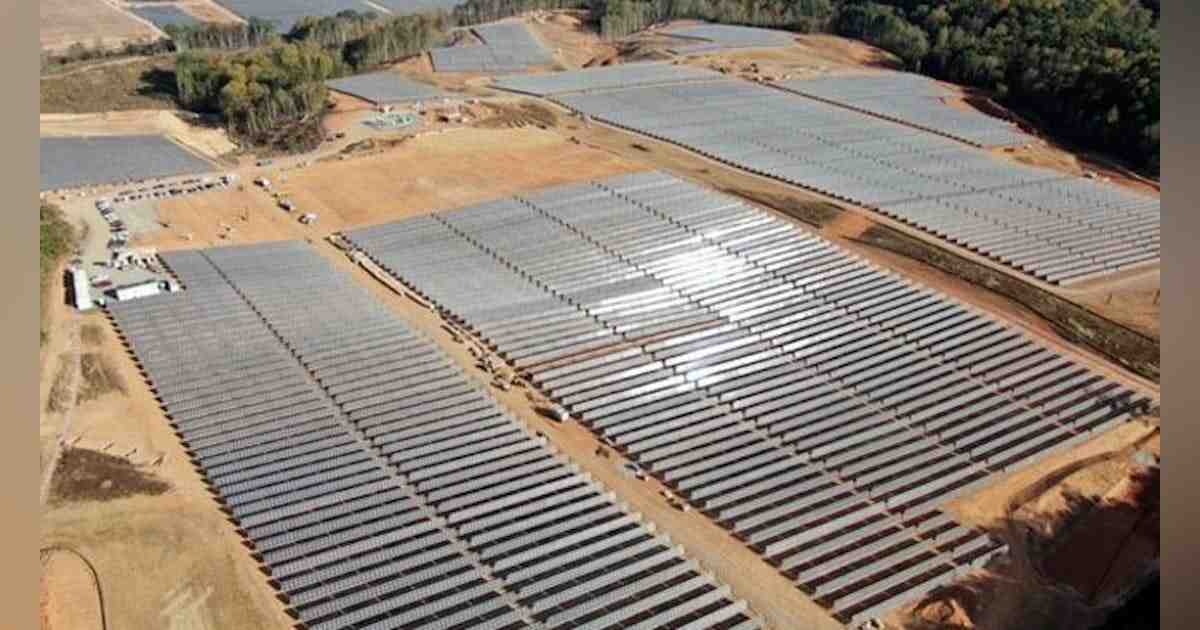Porsche today announces a new partnership with Cherry Street Energy to build a solar panel microgrid at One Porsche Drive in Atlanta.
One Porsche Drive is home to Porsche Cars North America (PCNA) and Porsche Experience Center Atlanta. Porsche expects the energy from the solar panels to provide “a significant part of the annual electricity needs”.
Cherry Street Energy is Georgia’s largest non-utility solar energy supplier, selling energy directly to the City of Atlanta, Fulton County and several leading Georgia utilities.
Meanwhile, the Porsche Experience Center is one of two in the U.S. where enthusiasts can try out Porsche models on an actual track. Porsche is investing $50 million in the construction of a new second public track for drivers, which should open in early 2023.
In addition to the above, visitors will be able to try Porsche’s EV model, the sports car Porsche Taycan, while charging it with 100% renewable energy. President and CEO of PCNA, Kjell Gruner, says
Powering our North American home and our Taycan fleet by harnessing the Georgia sun makes perfect sense and is a great testament to our commitment to sustainability.
This solar project contributes to the overall sustainability goals of Porsche AG. In 2030, Porsche aims to be CO2 net neutral throughout the value chain and the life cycle of new solid vehicles.
Porsche is the latest of several legacy automakers to switch to renewable energy. Last week, Ford announced a clean energy agreement with DTE Energy to add 650 megawatts of solar power capacity through solar panels in Michigan – the largest of its kind.
Porsche’s new solar panel grid is to be completed in 2023

Porsche says construction on the new solar array will begin in September and expects to be finished in 2023. Read also : Secret to treating ‘Achilles’ heel’ of alternatives to silicon solar panels revealed. Cherry Street predicts the solar panels will generate 2,050 megawatts of energy annually, which they say is enough to power 191 homes on average.
Furthermore, the renewable energy company says the solar panels will help reduce CO2 emissions by £3.2 million a year compared to fossil fuels.
Solar panels will be attached to the roofs where the test drivers start and to the new 950-foot covered walkway from the parking garage to Porsche headquarters.
Meanwhile, Cherry Street Energy will operate the solar panel network by selling power to Porsche. Cheery Street Energy founder and CEO Michael Chanin had this to say.
The Cherry Street Energy team welcomes the opportunity to partner with Porsche on an innovative infrastructure program, leading to the transition to reliable, renewable electricity.
While building its new facility and test track, Porsche plans to use concrete with a lower carbon content to further reduce its carbon footprint. Finally, the carmaker, in addition to using solar panels at its new Porsche campus, will recycle water, increase biodiversity and build “extensive new infrastructure for charging electric vehicles.”
The new partnership shows that Porsche not only wants to achieve carbon net neutrality by 2030, but also has a plan to achieve it.
FTC: We use automatic affiliate links to earn money. More.
Subscribe to Electrek on YouTube for exclusive videos and subscribe to the podcast.
How much emissions do solar panels reduce CO2?

Carbon footprint of solar energy About 50 g of CO2 per kilowatt-hour is produced during the first years of operation of a solar energy system. To see also : Trina Solar leading the compatibility charge in the ultra-high power era. The carbon footprint of a solar panel is approximately 20 times less than the carbon output of a coal-fired power source.
Does solar energy produce CO2 emissions? Solar energy technologies and power plants do not produce air pollution or greenhouse gases during operation.
How much CO2 is produced by solar panels?
After the team explained it all, they found that solar panels manufactured today are responsible, on average, for about 20 grams of carbon dioxide per kilowatt-hour of energy they produce over their lifetime (estimated at 30 years, regardless of when the panel was produced). This is a decrease compared to 400-500 grams in 1975.
How much units of emissions are produced with solar panels?
The US-based National Renewable Energy Laboratory (NREL) has estimated that solar energy produces lifetime emissions of 40 g CO2 equivalent per kilowatt-hour.
Do solar panels reduce CO2?
Solar energy reduces CO2 emissions by providing a clean and renewable source of energy. The panels that are installed on your home collect the energy of the sun and convert it into useful electricity.
How does solar and wind reduce CO2 emissions?
So, in practice, solar and wind must be combined with gas turbines to address the drop in electricity produced when the sun goes down or the wind dies down. If the sun or wind displaces coal, this results in a reduction in carbon dioxide emissions.
Do solar panels reduce carbon?
A residential solar panel system, for example, has the ability to meet the electricity needs of an entire home with around 80% lower carbon emissions than fossil fuels.
How does solar energy reduce CO2?
Solar energy reduces CO2 emissions by providing a clean and renewable source of energy. The panels that are installed on your home collect the energy of the sun and convert it into useful electricity.
How does solar and wind help the environment?
Wind is a more efficient source of energy than the sun. Wind turbines release less CO2 into the atmosphere. The wind turbine produces 4.64 grams of CO2/1kWh while the solar panel produces 70 grams of CO2/1kWh. Wind power consumes less energy and produces more energy compared to solar panels.
How much CO2 does it take to manufacture a solar panel?

Sure, a solar panel produces less energy than a ton of coal, but the devil is in the details, which brings us to the greenhouse gas life cycle. Here are the most common sources of energy and the amount of CO2 emitted to produce them: Solar panels produce 50 g of CO2 during production.
How much CO2 is produced in the production of solar panels? Taking into account the amount of CO2 produced during the production of solar panels, solar panels actually generate about 50 g of CO2 per kilowatt hour during the first years of operation. This is about 20 times less than the carbon production from coal-fired electricity sources.
How much fossil fuels does it take to make a solar panel?
The raw material for solar panels is coal, whose average lifespan is 11 years. This means that 11 tons of coal must be burned to make a solar panel – that’s about 3,000 pounds! The production process uses high temperatures and pressures.
How much energy does it take to make a solar panel?
How much energy is needed to make a solar panel?
- About 200 kWh of energy is needed to make one 100 W solar panel.
- One hundred watts x 10 hours of direct sunlight per day = 1000 watts of energy per day. …
- There are many different factors involved in answering this question.
Does it take fossil fuels to make solar panels?
Almost every step in the production of solar panels requires fossil fuels. First, production requires heat and energy, which can be obtained from fossil fuels such as coal, oil, and natural gas. Moreover, most types of solar panels consist of components made of crystalline silicon.
How much petroleum does it take to make a solar panel?
A barrel of 200 liters contains 4728 liters or 124.74 gallons; if filled with oil, you get about 35 pounds or 15 quarts (a little over half a gallon) per barrel (this varies depending on the distillation endpoints).
How much energy does it take to manufacture a solar panel?
How much energy is needed to make a solar panel? About 200 kWh of energy is needed to make one 100 W solar panel.
How much can a solar panel produce in a day?
While there are many factors that affect the amount of energy a solar panel can produce, you can expect a typical single solar panel in the United States to generate about 2 kWh per day, which saves an average of $0.36 in electricity costs per day.
Do solar panels produce more power than it takes to make them?
Solar panels ultimately produce more energy than is needed to produce them, study finds.
Does it take a lot of energy to make solar panels?
MYTH #1: Solar panels require more energy to manufacture than they produce over their lifetime. FACT: A study by the National Renewable Energy Laboratory conclusively shows that the energy production cost versus energy payback for solar modules is generally less than 4 years.
What is the lowest source of carbon emission?

| A type of energy | Carbon footprint |
|---|---|
| Nuclear | 12 gCO2/KWh |
| Tides and low tides | 22 gCO2/KWh |
| Hydropower | 24 gCO2/KWh |
| Geothermal | 38 gCO2/KWh |
Are solar panels a waste of money?

If you live in an area with high energy prices and a suitable solar rating and can afford the initial investment, it’s worth installing solar panels on your home while the 26% tax credit is in effect — good for the environment and your wallet. But don’t expect to eliminate your electricity bill overnight.
Why are solar panels not worth it? What are the main disadvantages of solar energy? Solar panels cannot store electricity, so you will have reduced power output in cloudy weather and zero power output at night. This is why most residential solar systems require a solar battery.
How long does it take for solar panels to pay for themselves?
Most US homeowners need about eight years to recoup their solar panel investment. For example, if your solar installation cost is $16,000 and the system helps you save $2,000 a year on your energy bills, then your payback period will be about eight years (16,000/2,000 = 8).
How long does a solar roof take to pay for itself?
Many rooftop solar systems will pay for themselves in five to ten years using a simple cost-benefit calculation, but that only tells us part of the story. We have to consider a number of other costs and benefits, which might be a little less obvious, but are still just as real.
Do solar panels ever pay for themselves?
Solar panels pay for themselves over time by saving you money on your electricity bills, and in some cases by making money through ongoing incentive payments. The payback time for solar panels averages between 5 and 15 years in the United States, depending on where you live.
What happens when your solar panels are paid off?
Reliability. One disadvantage of solar energy is that it relies on the sun, electricity cannot be generated during the night, requiring you to either store excess energy generated during the day or connect to an alternative energy source such as the local utility grid.
Are solar panels worth it yes or no?
Powering our North American home and our Taycan fleet by harnessing the Georgia sun makes perfect sense and is a great testament to our commitment to sustainability.5
Are solar panels a waste of money?
Powering our North American home and our Taycan fleet by harnessing the Georgia sun makes perfect sense and is a great testament to our commitment to sustainability.6
Is there any downside of solar panels?
Powering our North American home and our Taycan fleet by harnessing the Georgia sun makes perfect sense and is a great testament to our commitment to sustainability.7
Is getting solar really worth it?
Powering our North American home and our Taycan fleet by harnessing the Georgia sun makes perfect sense and is a great testament to our commitment to sustainability.8
What are the 2 main disadvantages to solar energy?
Powering our North American home and our Taycan fleet by harnessing the Georgia sun makes perfect sense and is a great testament to our commitment to sustainability.9
- This solar project contributes to the overall sustainability goals of Porsche AG. In 2030, Porsche aims to be CO2 net neutral throughout the value chain and the life cycle of new solid vehicles.0
- This solar project contributes to the overall sustainability goals of Porsche AG. In 2030, Porsche aims to be CO2 net neutral throughout the value chain and the life cycle of new solid vehicles.1
- This solar project contributes to the overall sustainability goals of Porsche AG. In 2030, Porsche aims to be CO2 net neutral throughout the value chain and the life cycle of new solid vehicles.2
- This solar project contributes to the overall sustainability goals of Porsche AG. In 2030, Porsche aims to be CO2 net neutral throughout the value chain and the life cycle of new solid vehicles.3
- This solar project contributes to the overall sustainability goals of Porsche AG. In 2030, Porsche aims to be CO2 net neutral throughout the value chain and the life cycle of new solid vehicles.4
What is the main disadvantage of solar energy?
This solar project contributes to the overall sustainability goals of Porsche AG. In 2030, Porsche aims to be CO2 net neutral throughout the value chain and the life cycle of new solid vehicles.5


